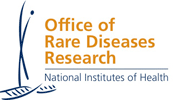G1D - Glucose transporter type 1 deficiency syndrome 
1. G1D 101- An Introduction
3. Common questions after the diagnosis of G1D
5. Movement disorders in G1D
a. What is GLUT1 deficiency syndrome?
GLUT1 deficiency syndrome (G1D) is a genetic condition, i.e., a disease caused by an alteration or mutation in a gene that primarily affects the brain. Most but not all affected individuals develop seizures within the first few months of life. These seizures are very difficult to treat with the common anti-seizure medications. Other individuals suffer from severely abnormal uncontrollable movements that interfere with their daily activities, with or without additional seizures. Babies with G1D are born normally and usually have a normal head size at birth, but overtime may show signs of delayed brain growth and development.
b. What are some other common symptoms of G1D?
- Developmental delays and learning disabilities
- Stiffness caused by abnormal tensing of the muscles (spasticity)
- Difficulty in coordinating movements (ataxia)
- Speech abnormalities (dysarthria)
- Episodes of confusion
- Lack of energy (lethargy)
- Headaches
- Muscle twitches (myoclonus)
- Involuntary irregular eye movements, particularly in early infancy
- Lifelong epilepsy and seizures of various types
c. Less common symptoms of G1D include:
- Spells of uncontrollable movements while awake (dyskinesia)
- Constant movements at rest and while awake (chorea)
- Episodes of paralysis of either side of the body, left or right (alternating hemiplegia)
- Hemolytic anemia (abnormal breakdown of red blood cells)
Like many other genetic conditions, it is important to understand that not all affected individuals experience all of the characteristic symptoms and the severity of each symptom can vary tremendously between individuals.
d. How common is G1D?
G1D is a rare disorder. Fewer than 300 cases have been reported since the disease was identified in 1991. However, the number of affected individuals may actually be greater because it is believed that not only individuals who suffer from seizures, but also people with other types of neurological disabilities may have undiagnosed G1D. G1D affects males and females of all races and ethnicities equally.
e. How is the diagnosis of G1D made?
When a diagnosis of G1D is suspected, a lumbar puncture (spinal tap) can be performed by a neurologist (a medical specialist who manages and treats disorders of the brain and spinal cord) or other physician. Low, and otherwise unexplained, glucose (sugar) values which are commonly found in the spinal fluid of affected individuals suggest the diagnosis. Genetic testing can then be done to confirm the diagnosis (see genetic testing). Genetic testing can also be performed in individuals with specific symptoms highly suggestive of G1D without performing a lumbar puncture. The first line of genetic testing involves direct DNA analysis .
f. What causes G1D?
G1D is caused by a defect in the SLC2A1 gene, the only gene currently known to be associated with G1D. The SLC2A1 gene makes a protein called the glucose transporter protein type 1 (GLUT1). This protein is responsible for transporting glucose (a simple sugar) from the blood into the cells for energy. Glucose transporter protein type 1 is involved in moving glucose across the blood-brain barrier, the wall that separates tiny blood vessels (capillaries) from the surrounding brain tissue. In normal conditions, glucose is the brain's main energy source. Alterations or mutations in the SLC2A1 gene can reduce or eliminate the function of the glucose transporter protein type 1 resulting in the signs and symptoms of G1D.
g. Is G1D inherited?
G1D can be inherited as an autosomal dominant genetic condition meaning that only one nonworking copy of the gene in each cell is enough to cause the disorder.
Most cases of this disorder, however, result from new spontaneous mutations in the gene that began with the affected individual at the time of conception. In these instances, there is typically no familial history of the disorder. In some cases, an affected individual may inherit the nonworking copy of the gene or mutation from an affected parent. For affected individuals, there is a 50% chance in each pregnancy to pass the nonworking copy of the gene to a child. Unfortunately, due to the variability of symptoms, it is difficult to predict the severity of the condition in a child of an affected parent.
It is important to understand that having a child born with G1D is no one's fault and that we cannot control the genes we pass on to our children.
DISCLAIMER
All the information contained herein was made possible by the collaboration between The Child Brain Foundation, Dr. Juan M. Pascual, and The National Institute of Health's Office of Rare Diseases Research (Collaboration, Education and Test Translation Program).
You may not commercially exploit any of the contents. Any redistribution or reproduction of part or all of the contents in any form is allowed and encouraged and proper acknowledgement is urged. To properly acknowledge the information contained here, please add the following to any excerpt or copy:
"We acknowledge The Child Brain Foundation, www.childbrainfoundation.org, as the organizer, Dr. Juan Pascual as the author, and The National Institute of Health's Office of Rare Diseases Research (Collaboration, Education and Test Translation program, CETT Program) as the sponsor of this information."
About the Collaborators






